Cowboys of Brazil’s Pantanal
Take a trip through Brazil's Pantanal with cowboys who can rope a crocodile or an anteater as easily as they can a cow.
By Susan Seligman
Imagine horses that will cross chest high caiman infested water. Imagine cowboys who can rope a crocodile or an anteater as easily as they can a cow. Hard to imagine? Then saddle up for a once in a lifetime trip to Brazil's Pantanal, and live the life of a Pantaneiro cowboy in one of the wildest and least explored regions of the planet.
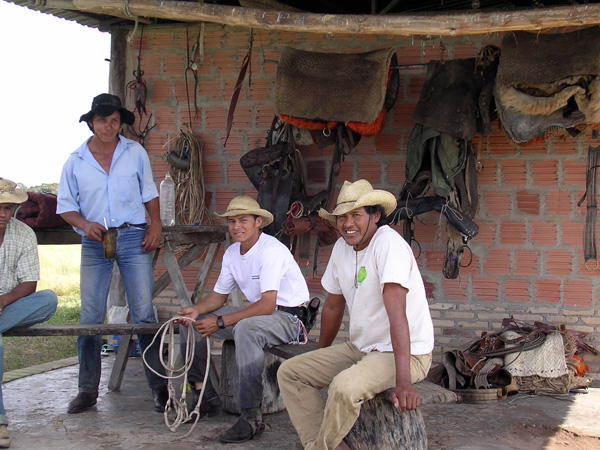
The Pantanal is the world's largest wetland. It stretches 140,000 square miles throughout southern Brazil and into its bordering countries of Bolivia and Paraguay. Teeming with wildlife, it is home to 95 species of mammals, 165 species of reptiles, 263 fish species and 665 species of birds. During the rainy season, flooding is rampant and a significant portion of the land mass is underwater. Cattle ranching is the number one industry in the Pantanal and the Pantaneiro cowboy the backbone of that economy.
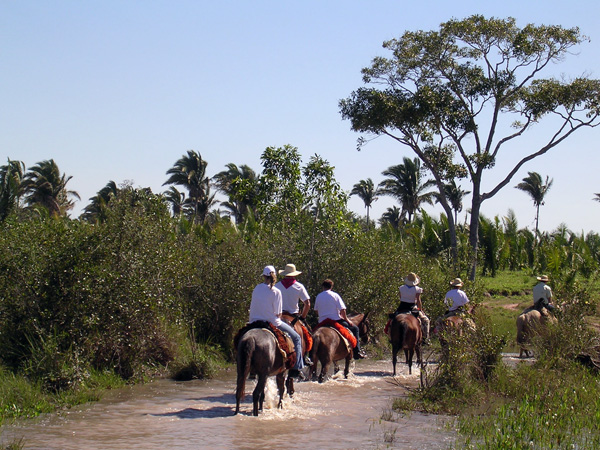
Cowboys in this remote part of the world live and work not unlike their ancestors did 200 years ago, in a fascinating culture wedded to the unique landscape, climate and bio-diversity of this wetland wilderness. On a ten day riding trip through the Pantanal, I was struck by the horses and tack on the ranches, or fazendas, where we stayed. The small compact horses, many with a “marchador" gait, have adapted to life in this watery terrain and have been the primary mode of transportation for centuries.
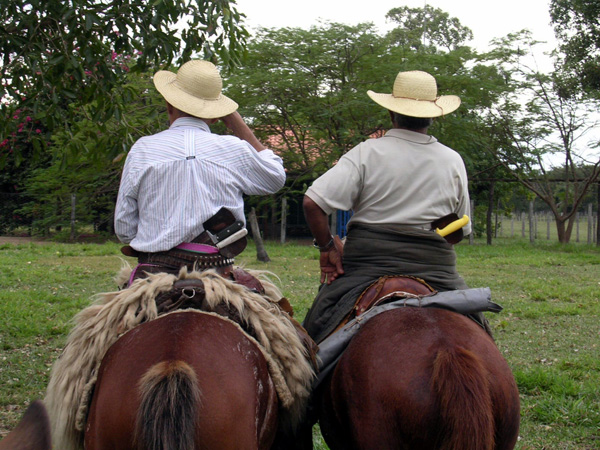
The unique Pataneiro tack has been tailored to long days on horseback. The cowboys ride not just with a saddle pad and a saddle, but five layers of wool, sheepskin and leather. Two woven wool saddle pads sit on the horse's back, topped by a leather tree to which leathers and stirrups are attached. The stirrups are merely heavy round metal rings. Around those three layers is the first girth. Next came a sheepskin. These were either in a natural color or dyed a bright orange, a tint favored by the Pantaneiros. The final layer was called a “baldrana," a large square piece of leather, similar in weight to a pair of chaps. It was the most comfortable saddle I had ever experienced.
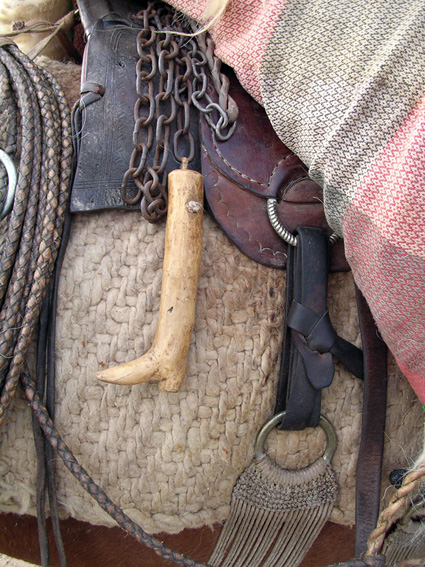
The Pantaneiro cowboys craft most of their own tack. One can determine the marital status of a cowboy by how he adorns his horse. The flashier and the more “rings" on the bridle, the more it says “I'm available." The process of fashioning tack is labor intensive. Cows are slaughtered, skinned, the hides dried and tanned, then dyed in bark from the jatoba tree. Tack travels with each cowboy as he moves from fazenda to fazenda to work for a season or several years.

Cowboy gear is also unique to the Pantaneiros. Brightly colored woven belts tied tightly around each cowboy's waist hold machetes or handguns. Cow horn cups or “guampas" are attached to the saddles for drinking terere, a mate tea sipped through a “bomba" or metal straw. Boots are short with long spurs. Pantaneiros all wear a distinctive straw hat.
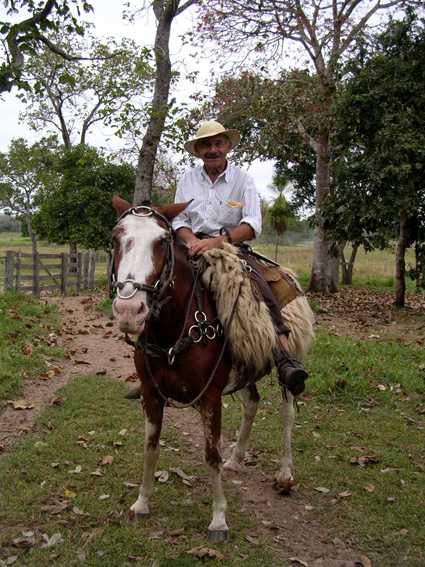
Most of the cowboys live in primitive outstations. Cooking is done by the women on indoor wood fire stoves. Because of the isolation of the fazendas, all the food is grown on the ranches. Freshly made cheeses, juices from exotic fruits, dried beef with rice are daily fare. Manioc, a potato-like root vegetable, accompanies most meals in one form or the other.
Few of us get the opportunity to experience a lifestyle that hasn't changed in centuries. As technology and growth encroaches on the Pantanal, so too will it affect forever the way of life of its people.
Learn about horseback riding vacation in Brazil on EquitrekkingTravel.com, which features great international riding holidays, including the Brazil Pantanal Horseback Riding Vacation.
About the Author: Susan Seligman specializes in adventure travel writing and photography and is based in New Mexico.




